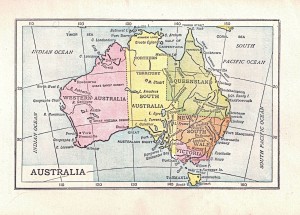Western Australia is claimed for Britain
The claiming of Western Australia for Britain.
By Clive Rodgers
The first European to explore the river was Dutchman, Willem de Vlamingh, in 1697, referring to it as New Holland. It was Vlamingh who named it ‘Swan River’ after its black swans. To European eyes black was an unusual colour for swans and worthy of note.
In 1801, the French explorer, Ensign Francois-Antoine Boniface Heirrisson, sailed up the Swan River. Continued French interest in the western part of the continent prompted the British to take action. The first British ship to reach the Swan River was HMS Challenger.
After anchoring off Garden Island, it was the Swanbourne son of the first Thomas Fremantle, i.e. Captain Charles Fremantle (born 1800) – who declared the Swan River Colony for Britain on 2 May 1829.
The next month was spent exploring the area, and mapping out the coast, before another ship, the Parmelia arrived with the Governor, Captain Stirling, and the first settlers.
On the King’s birthday, 12th August, the city of Perth was founded about 10 miles upstream. Captain Stirling also decided to create a port near the mouth of the Swan River, which was named Fremantle after Charles Fremantle.
Perth was founded on 12 June 1829 by Captain James Stirling as the political centre of the free-settler Swan River Colony. Stirling administered the Swan River settlement from June 1829 until August 1832.
Fremantle’s beginning was different from other colonies that had already been established in the east (New South Wales), because it was originally populated by people who migrated by choice.
It was a military and civilian settlement, not a settlement for convicts. They had a challenging time entering Cockburn Sound, both ships sustaining damage from rocks, and Parmelia was run aground, but arrived safely. The new settlers were granted free land at the settlement.
This was the only British colony in Australia established on the basis of land grants to settlers. Under the conditions stipulated by the Colonial Office, settlers would be granted land in proportion to the value of assets and labour that they brought to the colony. To ensure “productive” use of land, settlers were not given full title to their grants until they had been sufficiently “improved”. The system of land grants continued until 1832, after which crown land was disposed of by sale at auction.
Under the initial land grant conditions, settlers were granted 40 acres (162,000 m²) of land for every £3 of assets invested in the colony. Assessment of the value of assets was left to the discretion of the authorities, whose valuations were inaccurate and inconsistent. One settler observed a tendency to overvalue cattle while undervaluing general cargo, and Statham (1981) cites an example where two rabbits entitled a settler to a grant of 200 acres (809,000 m²).
For the purposes of assessing land entitlements, assets had to be physical capital applicable to land use; money was not assessed. In consequence, many settlers maximised their land entitlements by arriving with large amounts of expensive capital but very little cash.
This gross overcapitalisation caused the financial ruin of many early emigrants, and had a lasting deleterious effect on the colony’s economy. Moreover, much of the larger machinery that was imported was useless in Western Australian conditions
By 1832 there were fifteen hundred people in the “Swan River Colony.” During those first 20-30 years life was very hard for the new settlers. The issue was one of poor soil fertility, and consequent difficulty in growing sufficient food.
Read more about the subsequent history of Fremantle Australia:-
http://www.fremantlewesternaustralia.com.au/fremantle-history.htm
Fremantle Australia, today.
Fremantle Harbour is at the mouth of the Swan River, and serves as the port of Perth the state capital. Fremantle was It was declared a city in 1929, and has a population of approximately 25,000. The city contains well-preserved 19th-century buildings and other heritage features.
Swanbourne Australia, today
Swanbourne (Australia), is a western coastal suburb of Perth and is an affluent, upper middle class locality with older Federation style homes, many being renovated. The suburb was established in the late 19th century and named after Swanbourne in Buckinghamshire, England. New housing estates have been built recently through the redevelopment of areas such as the Swanbourne Senior High School.




